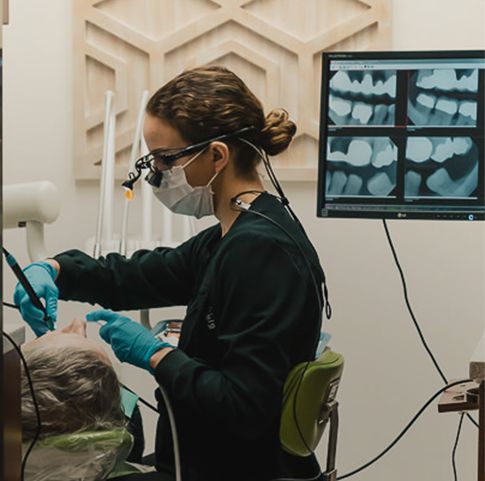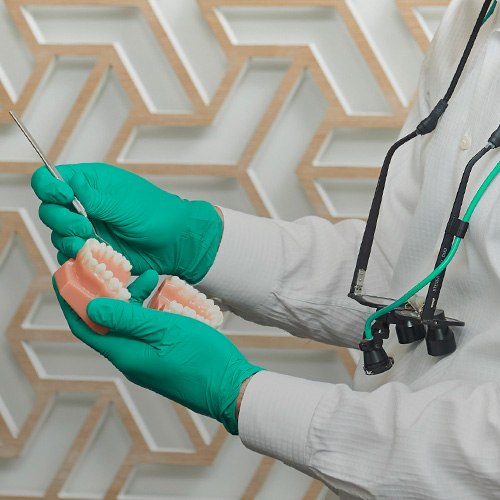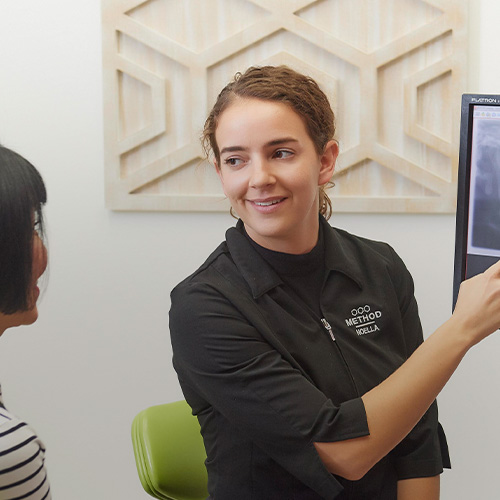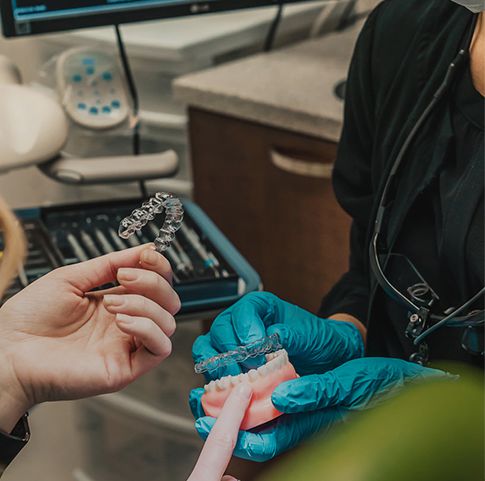What are Dental Fillings?
Dental fillings are any material used to fill a cavity. Cavities are areas of tooth decay that form a divot or hole in your tooth. It’s important to get these cavities filled as soon as possible, otherwise, the cavity will grow and the tooth decay will spread.
When you have a cavity, your dentist will remove the area of tooth decay. A filling is then used to replace the removed tooth structure. Without a filling, you will likely experience worsening dental pain. If the cavity is left untreated for long enough, you may even need to have the tooth removed and replaced with a dental implant.
What are the Different Types of Dental Fillings?
There are two main types of materials used for dental fillings: metal fillings and tooth-coloured fillings. Metal filling options include amalgam fillings and gold fillings. For tooth-coloured fillings, your options include composite fillings, porcelain fillings, and glass ionomer fillings.
Today, the most common types of fillings we recommend to our patients are gold fillings, composite fillings, and porcelain fillings, with gold being widely regarded as the best filling material. Your dentist can help you choose the best option for you depending on where you need the filling, what cost you’re comfortable with, and how you want the filling to look.
Amalgam (Silver) Fillings
Amalgam or silver fillings were popular in the past, but they have declined in popularity due to the advancement of other filling materials. While they are the least expensive filling option, they’re not commonly recommended to patients today.
Amalgam fillings are held in mechanically, which involves additional removal of tooth structure. Long-term, this means more weakening of your remaining natural tooth. Because of this, amalgam fillings have decreased in popularity and it’s uncommon to get an amalgam filling today.
If you do get an amalgam filling, typically they can be placed in one visit and anywhere in the mouth, including molars (although many patients don’t like the look of silver fillings on their front teeth). They’re made of metals including mercury, silver, copper and tin, making them strong enough for molars. There is some concern about the mercury in the filling, but the small amount the filling contains is widely-regarded as safe.
Gold Fillings
Gold is commonly regarded as the best possible material for fillings. It’s malleable and easy to shape to your tooth while still being strong enough to handle chewing forces. As the name suggests, gold fillings are made from a mix of metals including gold, silver, and copper. The combination of metals helps to make this type of filling more durable than amalgam fillings, although they are also more expensive.
Many patients choose gold fillings, with the only reasons not to being cost and aesthetics. Gold fillings are made from a cast (or model) or your tooth, meaning this type of filling requires at least two visits. First, a cast of your tooth is made and sent to a lab where your filling is created. Once the filling is made, your dentist will have you back for a second visit where the filling will be cemented into place.
Composite Fillings
Composite fillings are also known as plastic or white fillings. They’re made from composite plastic and material advancement over the past few decades means this type of filling can be placed anywhere in the mouth with few exceptions. They also have the benefit of being white in colour, creating a more natural look than metal fillings.
This type of filling is added to your tooth in layers and can be done in one visit. Between each layer, your dentist will harden the filling using a special light. Once all of the layers have been applied, your dentist will shape to filling to ensure it looks and feels natural.
Porcelain Fillings
Lab-made porcelain fillings have improved greatly since they were first introduced, and modern porcelain fillings are strong enough to be placed in any area of the mouth. Porcelain-metal hybrid fillings are another porcelain filling option that is used frequently as well.
Additional factors to consider when choosing porcelain fillings include the cost. Porcelain fillings are one of the most expensive filling options, although they are usually less expensive than gold fillings. They can be placed in one visit using CEREC technology, which can create fillings on-site. Otherwise, your filling will be made in a lab offsite and you will return for a second visit after the filling is made.
Glass Ionomer Fillings
Glass ionomer fillings are fairly weak and don’t last as long as other filling types, so they’re not recommended for most patients. This type of filling is only used in very specific situations where no other filling type is appropriate. In most cases when glass ionomer fillings are used, they are a temporary filling until a permanent, more durable filling type, like gold, can be placed.
What is the Process of Getting a Filling?
The process of getting your fillings will vary depending on which type of filling you choose. Direct fillings like glass ionomer fillings, amalgam fillings, and composite fillings can usually be done in one appointment. Indirect fillings like gold fillings and porcelain fillings usually require two visits.
Regardless of which type you choose, your dentist will first clean out the cavity and remove the decay. They will also shape the cavity to make a uniform opening for the filling. This is usually done with local anesthetic or “freezing”.
If you are getting a direct filling, your dentist will usually proceed with placing the filling. For indirect fillings, your dentist will take a cast of your tooth to have your filling made. You’ll then need to schedule another appointment to have the filling installed.
How Often Do Fillings Need to be Replaced?
When your filling needs to be replaced varies widely based on the filling type, where the filling is, and your dental habits. Gold, amalgam, and porcelain fillings often last the longest, up to 15 to 20 years, provided they are installed and cared for properly.
Many modern composite fillings can last 10 years or more, although they may need to be replaced sooner depending on where they are in your mouth. Sometimes, composite fillings on the front teeth need to be replaced more often because they can become dislodged when biting into food. They can also stain over time, and some patients choose to replace them sooner for aesthetic reasons.

Signs Your Filling Needs to be Replaced
If you notice changes in the appearance of your filling or pain coming from around your filling, it’s likely time for a new one. Some signs to watch for include:
- Loose fillings
- Broken or cracked fillings
- Roughness (your filling should feel smooth)
- Holes, black or brown spots
- Pain, including
- Tooth sensitivity
- Pain or pressure when eating
- Sharp or throbbing pain
- Toothache
It’s important that everyone visit the dentist every 6 months for an exam, especially if you have fillings. During your exam, your dentist will check your fillings to make sure they don’t need to be replaced. They can also recommend an x-ray to check for tooth decay underneath the filling.
Schedule an appointment if you’re worried about a current filling or if you think you might need a new filling. It’s best to have these issues looked at as soon as possible to prevent further pain and damage to your teeth.






